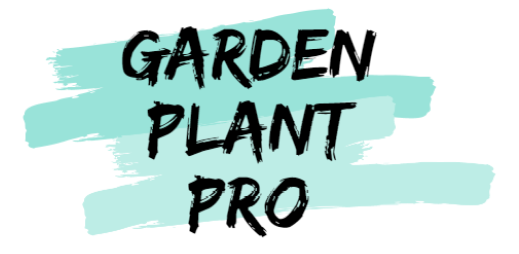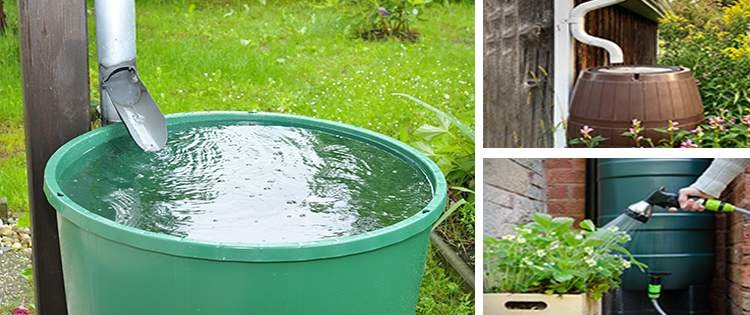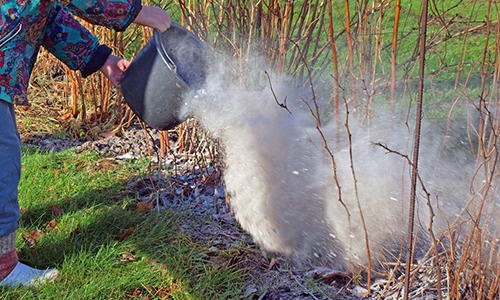Kohlrabi (also known as turnip-cabbage) is a unique vegetable that belongs to the cabbage family and is known for its crunchy texture and sweet, mild flavor. It is a great source of essential vitamins and minerals, making it a healthy addition to any diet.
Growing kohlrabi in your vegetable garden is relatively easy, and it can be a great way to diversify your garden’s produce. In this guide we’ll go through the process of growing kohlrabi, from choosing the right location for your garden to harvesting your mature kohlrabi. We’ll cover everything you need to know, including when to plant, how to care for your plants, and how to deal with common problems. Let’s get started…
A Brief History
Kohlrabi, also known as turnip-cabbage, is a member of the Brassica oleracea family and is believed to have originated in the Mediterranean region. It has been cultivated in Europe since the 16th century and was brought to North America by European settlers in the 18th century. Since then, it has become a popular vegetable in many parts of the world.
Kohlrabi is considered to be a cool-season crop and is best grown in climates with mild temperatures and short growing seasons. It grows best when temperatures are between 40°F and 75°F (4.4°C – 24°C). In warmer climates, it can be grown as a winter crop or in the early spring.
Kohlrabi has a slightly sweet flavor and can be eaten raw or cooked. It can be served as a side dish, added to salads, soups, and stews, or used as an ingredient in stir-fries and other dishes. Its leaves are also edible and can be added to salads or cooked like spinach.
Kohlrabi is an easy-to-grow vegetable that requires minimal care and attention once planted. With proper care and maintenance, you can enjoy fresh kohlrabi from your own vegetable garden!
Nutritional Benefits
Kohlrabi is a vegetable that is packed with nutritional benefits.
It’s an excellent source of vitamins C, A, and K, as well as minerals like calcium, potassium, and iron. The leaves of the plant also contain vitamin C, as well as vitamin K and fiber. Eating kohlrabi can help you meet your daily requirements for these essential vitamins and minerals.
Kohlrabi is low in calories and fat, yet high in dietary fiber. This makes it a great choice for those looking to maintain a healthy body weight. It’s also an excellent source of antioxidants, which can help protect your cells from damage caused by free radicals.
In addition to its vitamins and minerals, kohlrabi also contains a range of other beneficial compounds such as polyphenols and flavonoids. These compounds are thought to reduce inflammation and protect against chronic disease, making kohlrabi a great choice for those looking to improve their overall health and wellbeing.
Eating kohlrabi can be a great way to get more nutrients into your diet without the added calories or fat found in other vegetables. Try roasting it with other vegetables like carrots or potatoes for a delicious side dish or shred it raw into salads for an extra crunchy topping. No matter how you prepare it, you’ll be sure to benefit from the nutritional benefits of this versatile vegetable!
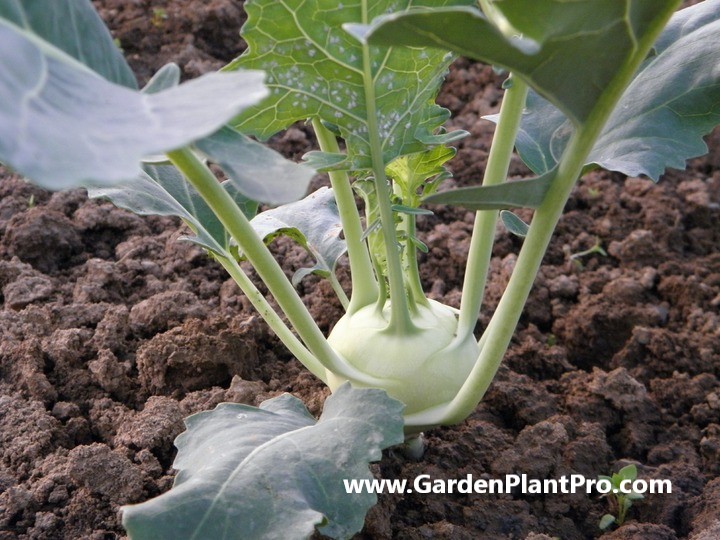
Common Varieties & Their Uses
Kohlrabi is an easy-to-grow vegetable that comes in a variety of varieties. Depending on the variety, kohlrabi can be harvested at different times and used for different purposes. There are three main types of kohlrabi: Purple Vienna, White Vienna, and Early White Vienna.
Purple Vienna Kohlrabi has a dark purple skin and is one of the most popular varieties. It has a mild flavor with a slight sweetness and can be eaten raw or cooked. The bulbs can be harvested when they reach between two to four inches in diameter, approximately two months after planting.
White Vienna Kohlrabi is also popular and is distinguished by its white skin and mild flavor. It can be eaten raw or cooked as well and is ready to harvest when it reaches between two to four inches in diameter, approximately two months after planting.
Early White Vienna Kohlrabi has a white skin and is sweeter than the other varieties. It matures quickly, only needing around 40 days to reach maturity, making it the fastest kohlrabi variety to harvest from seed. It can be eaten raw or cooked and is best harvested when it reaches between two to three inches in diameter.
No matter which variety you choose, kohlrabi can be sliced for salads or soups, shredded for slaws, boiled and mashed as a side dish, roasted as part of a medley of vegetables, or even grilled on skewers with other vegetables for added flavor.
When To Sow
When it comes to sowing kohlrabi, timing is essential.
Kohlrabi grows best either side of the hottest part of the summer. It performs best when sown or planted from late winter into spring when the temperatures are cool and the soil is warm enough to support germination.
For earlier harvests, sow seeds directly in the garden in early spring or start them indoors about four weeks before the last frost. Space kohlrabi seeds about 2 inches apart in rows 10 to 12 inches apart. Kohlrabi grows best in cool temperatures between 40°F and 75°F, so pay attention to your local weather forecasts when deciding when to plant.
Choosing A Suitable Location In The Garden
When choosing a suitable location to grow kohlrabi in your vegetable garden, there are a few things to consider. It is important to select an area with enough sun exposure. Kohlrabi needs at least six hours of direct sunlight each day in order to thrive. A partially shaded area can still work, but may not produce as much crop yield.
DIY PROJECT: Collect rainwater no matter where you live...
This DIY project is the best way to legally collect rainwater NO MATTER where you live. Get chlorine-free water, cut down on your water bills, and have enough for an emergency situation or to water your garden. Read More Here...
The soil should be fertile and well-drained. It should also have a pH level between 6.0 and 6.8 for optimal growth. Before planting, it is best to test the soil’s pH level and amend it if necessary.
It is also important to ensure there are no weeds in the area you choose for your kohlrabi garden plot. Weeds can compete with your plants for space and nutrients, so it is important to remove them before planting.
When planting kohlrabi, consider spacing the seedlings four inches apart in rows or trenches that are at least 12 inches apart. This will provide enough room for the roots of the plant to grow and spread without becoming overcrowded or inhibited.
Finally, it is important to select an area that will be easy for you to access for regular maintenance such as weeding, fertilizing, and harvesting. This will make caring for your kohlrabi crop much easier and more enjoyable!
Preparing The Soil
Preparing the soil for kohlrabi is essential to ensure a successful crop. To start, choose a location that has full sun with good drainage and a fertile soil that is rich in organic matter. Heavy soil can be used as long as it is well-drained, and sandy soil can also be used. Once the location is chosen, fertilize the soil and then plant the kohlrabi.
The best way to prepare the soil is by digging it over to a depth of 15-20 cm and removing any weeds. Incorporate plenty of organic matter such as well-rotted manure or compost into the topsoil to improve its structure, fertility and water retention. Then level and firm the soil with a rake before planting.
It is important to keep the soil moist when growing kohlrabi so make sure you water regularly throughout the season. Mulching with an organic material such as straw or compost will help retain moisture in the soil, reducing watering requirements.
Planting The Seeds Or Seedlings
Planting the seeds or seedlings is an important step in growing kohlrabi in your vegetable garden. When sowing kohlrabi seeds, it is best to plant them in rows 10 to 12 inches apart, spacing the seeds about 2 inches apart. To ensure successful seed propagation, be sure to use fertile soil and plant the seeds ¼ inch deep. If you are using seedlings, plant them ½ inch deep and 1 inch apart.
Kohlrabi can be sown outdoors when there is six to eight hours of full sun. To improve soil quality, amend the planting location with well-rotted compost or manure. As the plants grow, thin successful seedlings from 5 to 6 inches apart. This will ensure adequate air circulation and sunlight for each plant. To prevent diseases and pests from developing, keep the area free of weeds and debris and inspect plants regularly for signs of infestation or disease. Planting beneficial companion plants nearby can also help ward off pesky insects.
Caring For The Seedlings
Once your kohlrabi seedlings have emerged, they will need to be cared for in order to ensure a successful harvest. Caring for kohlrabi seedlings requires regular watering, thinning and fertilizing.
Watering is key to healthy kohlrabi growth. Make sure to keep the soil constantly moist, but not water-logged. Water your seedlings regularly and deeply – about 1 inch per week – especially during hot, dry spells.
Thinning out your kohlrabi seedlings is also important for successful growth. Thin out the seedlings when they are about 2.5cm (1in) tall or when the first true leaves appear, leaving a final spacing of 15cm (6in) apart.
Fertilizing your soil before planting is also important for successful growth and harvest. If you haven’t already done so, be sure to fertilize your soil before planting your kohlrabi seeds or seedlings. You can use organic compost or a balanced fertilizer with an NPK ratio of 5-10-5 at a rate of 3 pounds per 100 square feet of garden space.
Finally, you can have a continuous crop if you plant your kohlrabi every two to three weeks. This way you can enjoy fresh kohlrabi all season long.
Watering & Fertilizing
Watering and fertilizing are essential for successful kohlrabi growth. Kohlrabi needs plenty of water and fertilizer to ensure that the plants grow quickly and produce healthy, tasty stems, leaves, and bulbous bases. When the first true leaf appears, apply a half-strength starter solution fertilizer once a week. After two true leaves appear, use a full-strength fertilizer solution every two weeks.
Kohlrabi also needs to be kept moist throughout its growing season. Mulch the soil with plenty of organic material such as compost or grass clippings to help retain moisture in the soil and keep weeds at bay. Water your kohlrabi plants when the top inch of soil begins to dry. If you live in an area with hot summer temperatures, water more frequently to ensure your plants receive enough moisture.
When harvesting, it is important not to leave kohlrabi on the plant too long as it can become tough or woody if left in the ground too long. Be sure to harvest your kohlrabi when it is still young and tender for best results.
Do you have some charcoal in your house right now? We call charcoal a “miracle leftover” for anyone who wants to be a little more self-sufficient and cut costs. That’s because it can help you with so many different things around the house and garden. You can even use it to make an energy-free fridge. Read More Here...
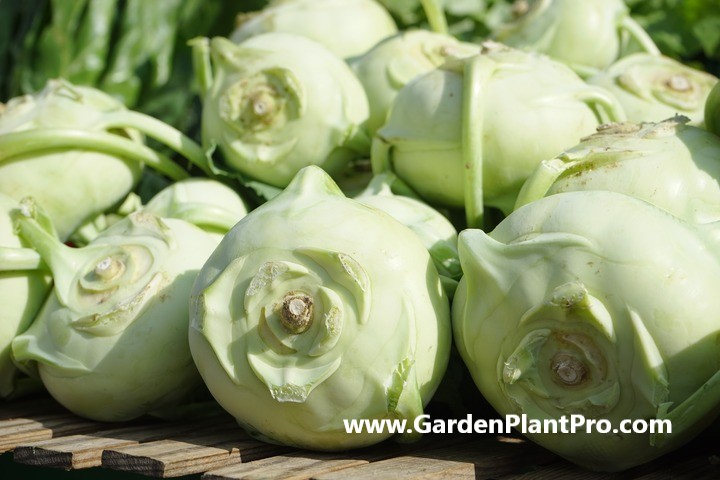
When & How To Harvest
Harvesting kohlrabi is a simple but important process to ensure you get the most out of your crop. The best time to harvest is when the swollen part of the stem reaches 2-3 inches in diameter. To harvest, cut the kohlrabi root off at ground level with a sharp knife or scissors. It is best to harvest in the morning when temperatures are cooler and humidity levels are higher. The stem should be succulent, crisp and firm when harvested.
For early season harvests, sow seeds every two to three weeks from mid-spring for a continuous harvest from spring through early summer. Look for days to harvest of 35-45 on the seed packet so you know when your kohlrabi is ready. For a later harvest, it is best to grow giant varieties as a fall crop. Green varieties sown from mid-spring are ready to pick 35-45 days after sowing.
Once harvested, kohlrabi can be stored in an airtight container in the refrigerator for up to two weeks. If necessary, it can also be frozen or canned for longer storage periods. Enjoy your freshly harvested kohlrabi in salads, stir fries and soups!
Storing & Preserving
Storing and preserving kohlrabi is a crucial part of the growing process, as it allows you to enjoy your harvest for a longer period of time. In order to successfully store and preserve kohlrabi, it is important to keep the bulb cool and moist. The ideal conditions for long-term storage would include 95% relative humidity at 32°F to 40°F (0°C to 4.4°C).
If you are storing the kohlrabi bulb, be sure to remove the leaves and stems from the bulb first. This will prevent them from rotting or developing mold. Once removed, you can store the kohlrabi in a plastic bag with some moisture. Make sure that the bag is sealed tight and place it in a cool, dark location such as a refrigerator or root cellar.
If you intend on preserving kohlrabi for longer terms, you can pickle them or ferment them into sauerkraut. To pickle your kohlrabi, slice them up into small cubes and place them in a jar with some vinegar and spices. Seal the jar tightly and store it in a cool, dark place.
To ferment your kohlrabi into sauerkraut, thinly slice them and place them in a jar with some salt and spices. Fill the jar with water until all of the ingredients are submerged, seal it tightly and allow it to ferment for several weeks before consuming.
Storing and preserving your kohlrabi harvest is an easy way to extend its shelf life and enjoy your harvest for months after harvest. With these simple steps, you can easily prepare and store kohlrabi for long-term storage or preservation.
Common Diseases & How To Control Them
Common diseases can be a major problem when growing kohlrabi in the vegetable garden. To reduce the risk of disease, always purchase clean, disease-free seed from a reliable source. Good cultural control practices are also essential for reducing disease. These include timely sowing of seeds, proper spacing of plants in the garden, regular watering to keep the plants from drying out, and avoiding overcrowding and over-fertilizing.
Various fungal and bacterial diseases can affect kohlrabi, including clubroot, soft rot, blackleg, and downy mildew. Prevention is the best defense against these diseases, as once they take hold it can be difficult to get rid of them.
Clubroot
Clubroot is a soil-borne disease that causes the roots of the plant to become swollen and distorted. This can lead to stunted growth and poor yields. To prevent clubroot infection, rotate crops every year so that kohlrabi does not grow in the same spot for more than one season. Avoid overwatering and ensure that the soil is well-drained. If clubroot is identified early enough, chemical treatments may help to control it.
Soft Rot
Soft rot is a bacterial disease that causes soft spots on the root of the plant which can eventually lead to rotting and death of the plant. It is often caused by improper watering or overcrowding of plants in the garden. To avoid soft rot, ensure proper spacing between plants and water only when necessary. Do not over-water your plants or allow standing water around them.
Blackleg
Blackleg is a fungal disease that affects the stems of kohlrabi plants causing them to become blackened or rotten at their base. To prevent blackleg infection, avoid planting kohlrabi in areas with poor air circulation or heavy shade as this encourages fungal growth. If you suspect that your plants have been infected with blackleg, remove any affected parts and dispose of them immediately away from other plants.
Common Pests & How To Control Them
Kohlrabi is relatively pest-free, but there are a few common pests to watch out for. Aphids, slugs and snails, and cabbage loopers can all cause damage to kohlrabi plants.
Aphids are small, soft-bodied insects that attack young plants and often appear in clusters near new growth. They can be controlled with insecticidal soap or horticultural oil. You can also use ladybugs, lacewings, or nematodes as natural predators of aphids.
Slugs and snails feed on the leaves of kohlrabi plants and can cause substantial damage. To control them, you can place boards or newspapers around the base of the plant to give them a place to hide during the day. At night, collect them and dispose of them in soapy water. You can also sprinkle diatomaceous earth around the base of the plant as an organic way to keep them away as well as create a barrier with copper tape or copper mesh.
Cabbage loopers are small green caterpillars that feed on kohlrabi leaves and can cause significant damage if left unchecked. The best way to control them is to handpick them from the plant and dispose of them in soapy water. You can also use floating row covers to prevent adult moths from laying eggs on the plants. If necessary, you can use Bacillus thuringiensis (Bt) as an effective organic pesticide for controlling cabbage loopers and other caterpillar pests.
CASE STUDY: We've been living off the grid for the last 40 years...
In all that time an electric wire has never been connected to our house. We haven’t gotten or paid an electricity bill in over 40 years, but we have all the electricity we want. We grow everything we need, here, in our small backyard. We also have a small medicinal garden for tough times. Read More Here...
By keeping a close eye on your kohlrabi plants for signs of pests, you can take steps to prevent or control infestations before they become a problem. Additionally, planting beneficial companion plants such as marigolds, nasturtiums, dill, oregano, rosemary, and garlic near your kohlrabi plants can help
Beneficial Companion Plants
Growing kohlrabi in the vegetable garden can be very rewarding. The nutrient-rich vegetable is not only a delicious addition to many dishes, it is also easy to grow. Knowing which companion plants are beneficial for kohlrabi can help ensure a successful harvest.
Bush beans, brussels sprouts, kale, cabbage, onions, garlic, cauliflowers, beets, cucumbers, celery, potatoes, shallots, mustard and sage are all good companion plants for kohlrabi. Tomatoes (both bush and vine) and dill also make suitable companion plants.
When planting companion plants around kohlrabi it is important to consider how much sun and water each plant needs. Planting those that require similar amounts of sun and water will help keep them healthy and thriving. For example, tomatoes require more sun than cabbage or kale do, so it’s best to avoid placing these two together.
Companion planting can also be used as a natural way to control pests. Cabbage worms are deterred by thyme which can be planted around kohlrabi to keep them away. Other beneficial insects such as ladybugs and lacewings can also help keep harmful pests under control.
When planting companion plants around kohlrabi it is important to remember that overcrowding can lead to disease and nutrient deficiencies in the soil so it’s important to give each plant enough room to grow without crowding the others out.
By following these guidelines and choosing the right companion plants for your kohlrabi crop you should be able to reap a plentiful harvest of nutrient-rich vegetables from your garden this season!
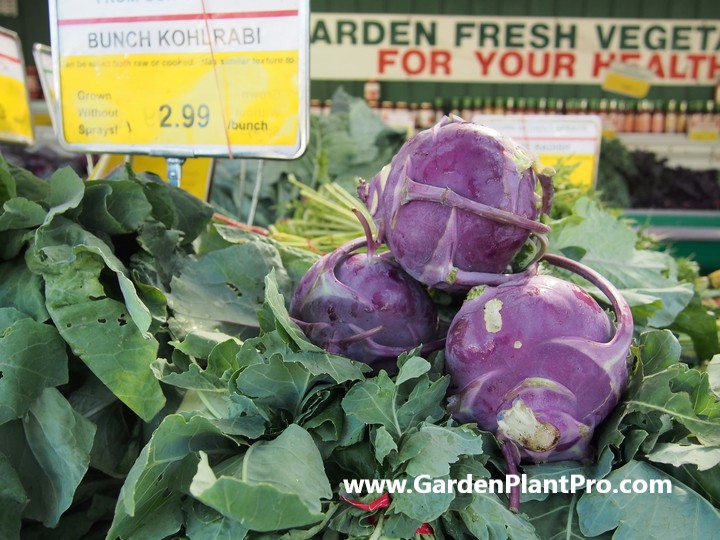
Using Kohlrabi
Using kohlrabi is easy and versatile.
It can be eaten raw or cooked, used in salads, soups, stews, stir-fries and more. The bulbous base can be grated or sliced, while the leaves can be chopped and used as a spinach substitute.
Kohlrabi can be eaten raw or cooked. Raw kohlrabi can be grated into salads or slices can be added to sandwiches and wraps. When cooked, the bulbous base can be boiled, steamed, roasted or stir-fried. The leaves can also be boiled or steamed like spinach. Kohlrabi is also delicious when pickled or preserved in olive oil.
Kohlrabi is an excellent source of vitamins C and B6, calcium and potassium. It is also a good source of dietary fiber and iron. The leaves are especially nutritious and are an excellent source of vitamins A, C and K.
When using kohlrabi in recipes, it’s best to use the bulbous base when it’s still young and tender for the best flavor and texture. For maximum nutrition, use both the bulbous base and leaves when cooking with kohlrabi.
